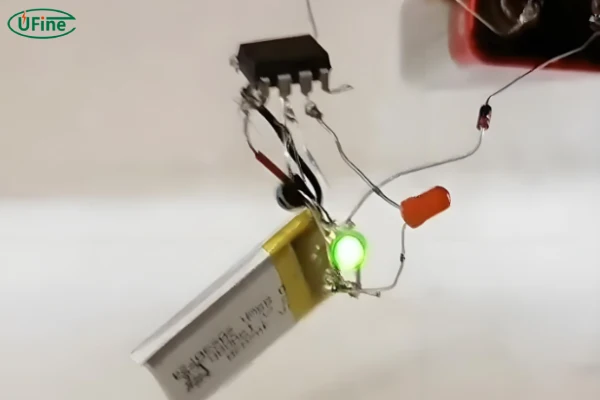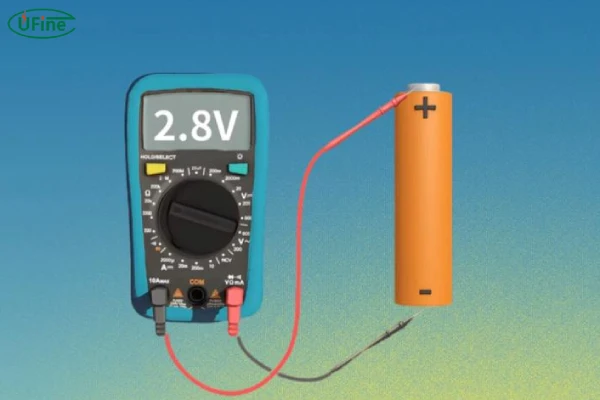If you’re reading this, there’s a good chance you’re frustrated with a lithium-ion battery that just won’t work like it used to. Maybe it powers down too quickly, or perhaps it won’t charge at all. Whether it’s your phone, laptop, or a power tool, a dead battery can disrupt our days in the worst way. Fortunately, some lithium-ion batteries can be brought back to life with a few targeted techniques—and a little bit of patience.
In this article, we’ll cover five methods to revive a lithium-ion battery, when these techniques are worth trying, and a few tips on maintaining and properly disposing of your batteries. Let’s dive into the details.
Part 1. Can a dead lithium battery be revived?
The first question you might have is, “Is my battery actually dead, or can it be revived?” A truly dead lithium-ion battery—one that is old or physically damaged—won’t likely come back to life, no matter what you do. But there’s hope for some batteries, especially if they’ve just fallen into a deep discharge state or are showing signs of age rather than true failure.
How to Tell if a Lithium Battery Can Be Revived
Before investing time and effort, check if your battery is salvageable:
- Physical Inspection: If your battery is bloated, cracked, or leaking, don’t try to revive it. These batteries pose serious safety risks, including the potential to catch fire.
- Voltage Testing: Using a multimeter, measure the voltage of the battery. A healthy lithium-ion battery should read about 3.7V or slightly higher. If it reads below 2.5V, reviving it might be difficult, and trying to charge a deeply discharged battery can be risky.
- Age and Usage: If your battery is several years old or has gone through hundreds of charge cycles, it may be naturally degraded. Lithium-ion batteries are designed to last around 300-500 charge cycles, so if it’s been used extensively, revival might only bring limited results.
With these checks, if you’re confident that the battery might have a second chance, move on to the methods below.
Part 2. 5 Ways to revive a lithium-ion battery

Once you’re ready to try, here are five methods that can often bring a battery back to life. Just be sure to take precautions—use gloves and safety goggles and keep an eye on the battery for any signs of heating or swelling.
Method 1: Use a Slow Charge to “Wake Up” the Battery
When lithium-ion batteries sit discharged for too long, they can enter a “sleep” mode to protect themselves from damage. Charging them very slowly is a way to bring them out of this state.
Tools Needed: A low-output charger, such as a USB charger
Steps:
- Connect the battery to a slow charger. This could be a USB port or a charger with an output of 0.5 amps or less.
- Leave it connected for at least 6-8 hours. This slow trickle of current can help the battery rise gently to a functional voltage.
- Check the battery’s voltage with a multimeter after a few hours. If it reads around 3.0V or higher, switch to a regular charger to bring it up to a full charge.
This approach is gradual and safer for the battery than a fast charge, especially in the early stages.
Method 2: Boost Charging Using Another Battery
This method is similar to jump-starting a car battery. Using a healthy battery of the same voltage, you can “jump” the dead battery to give it an initial charge boost.
Tools Needed: A working lithium-ion battery (with the same voltage), wires for connecting the two batteries
Steps:
- Place the two batteries side by side, aligning their positive and negative terminals.
- Use wires to connect the positive terminal of the charged battery to the positive terminal of the dead one. Do the same for the negative terminals.
- Let the two batteries sit connected for 1-2 minutes, allowing a charge transfer.
- Check the dead battery’s voltage. If it has risen above 2.5V, try charging it fully with a standard charger.
This method can “wake up” a battery that’s deeply discharged. However, it’s essential to avoid leaving the batteries connected for too long, as this could cause overheating or an unstable charge transfer.
Method 3: Controlled Charging Using a DC Power Supply
For those with some technical experience, a variable DC power supply can allow you to control the current and voltage precisely, which can be effective for reviving batteries.
Tools Needed: DC power supply, multimeter
Steps:
- Set the power supply to 4.2V and a very low current—around 100mA.
- Connect the battery to the power supply, ensuring correct polarity.
- Gradually increase the current as the battery’s voltage begins to rise, but never exceed 4.2V.
- Once the battery reaches around 3.7V, switch to a standard charger to complete the charging cycle.
This method is useful but should only be attempted by those with experience in electronics, as an incorrect setup can damage the battery or be unsafe.
Method 4: The Freezing Method
Although unconventional, some users report that freezing a dead battery temporarily revives it, likely due to how cold temperatures affect battery chemistry.
Tools Needed: Resealable plastic bag, freezer
Steps:
- Place the battery in a sealed plastic bag, ensuring no moisture can enter.
- Leave it in the freezer for 24 hours.
- Allow the battery to warm up to room temperature naturally.
- Charge it slowly, as per Method 1.
Freezing a battery can sometimes lead to a brief recovery, although it’s typically short-lived. This method is more of a last resort and can be helpful if you just need the battery to function temporarily.
Method 5: Software Recalibration
Certain batteries in laptops or high-tech devices have software that can recalibrate the battery’s power reading, effectively resetting the charge level.
Tools Needed: Computer with battery management software
Steps:
- Open the battery management or power options software on your device.
- Select “calibrate” or “reset battery.” The software may guide you to drain the battery fully and then recharge it.
- Allow the calibration process to finish. This process takes time but may help if the battery appears to be functioning poorly due to a misreading of its capacity.
This technique works best on batteries that are healthy but seem to have a miscalibrated charge level.
Part 3. Maintenance and care for longevity
Reviving a battery is a good temporary fix, but to keep lithium-ion batteries healthy in the long run, regular maintenance is key.
- Charge Moderately: Lithium-ion batteries prefer to stay within 20-80% charge. Avoid fully discharging or overcharging.
- Avoid Extreme Temperatures: Store and use batteries in moderate conditions. High temperatures degrade lithium-ion cells, while low temperatures temporarily reduce capacity.
- Use the Right Charger: Stick to a charger designed for your battery’s voltage and amperage to avoid overcharging or damaging the cells.
- Store at Partial Charge: If you won’t be using a battery for an extended period, store it at around 50% charge, ideally in a cool, dry place.
Following these habits can extend the life of your lithium-ion batteries and reduce the need for revival.
Part 4. When it’s time to say goodbye
Unfortunately, not every battery can be saved. Knowing when to let go is just as important as knowing how to revive.
- Swollen Battery: A bloated or deformed battery is a clear sign it’s time to replace it, as it could pose safety risks.
- Persistent Low Voltage: If a battery remains under 2.5V even after revival attempts, it’s likely too degraded.
- Excessive Heating: If the battery gets hot while charging, it may be nearing the end of its life.
Trying to revive a battery with these symptoms isn’t just ineffective; it can be dangerous.
Part 5. Proper disposal of dead batteries
When it’s time to retire a lithium-ion battery, make sure you dispose of it safely. Batteries contain chemicals that can harm the environment if not disposed of correctly.
- Avoid Regular Trash: Never throw lithium-ion batteries in regular trash. They can cause fires and release toxic chemicals.
- Take to a Recycling Facility: Many electronics stores and community recycling centers accept old batteries and ensure they’re processed safely.
- Store Safely Until Disposal: If you’re storing batteries before recycling, keep them in a cool, dry place, ideally in a fireproof container.
Proper disposal isn’t just a responsible choice; it’s essential for environmental health and safety.
Part 6. Final words
Reviving a lithium-ion battery can feel like a minor miracle—saving you money and reducing waste. While these five methods offer practical solutions, they require caution and a bit of patience. And, of course, not every battery is meant to be revived. But with proper maintenance, many of your lithium-ion batteries can enjoy longer, healthier lives. And when it’s time to part ways, remember to dispose of them responsibly.
Related Tags:
More Articles

How to Choose the Best Floor Scrubber Battery for Commercial Cleaning?
Selecting the ideal floor scrubber battery ensures a long runtime, rapid charging, and minimal maintenance for efficient commercial cleaning operations.
Battery for Blower vs Battery for Leaf Vacuum: Which One Should You Choose?
Battery for blower vs leaf vacuum—learn the key differences in power, fit, and runtime to choose the right battery for your outdoor tool needs.
How to Choose the Right Battery for Blower?
Choosing the right blower battery? Consider voltage, capacity, chemistry & usage. This guide helps match the best battery for peak performance.
How to Choose the Best Insulated Battery Box for Lithium Batteries?
Choosing the Best Insulated Battery Box for Lithium Batteries? Discover key factors such as size, material, and safety for optimal protection and performance.
7 Critical Elements on a Lithium Battery Shipping Label
What must be on a lithium battery shipping label? Learn 7 key elements to ensure safety, legal compliance, and correct handling across all transport modes.




